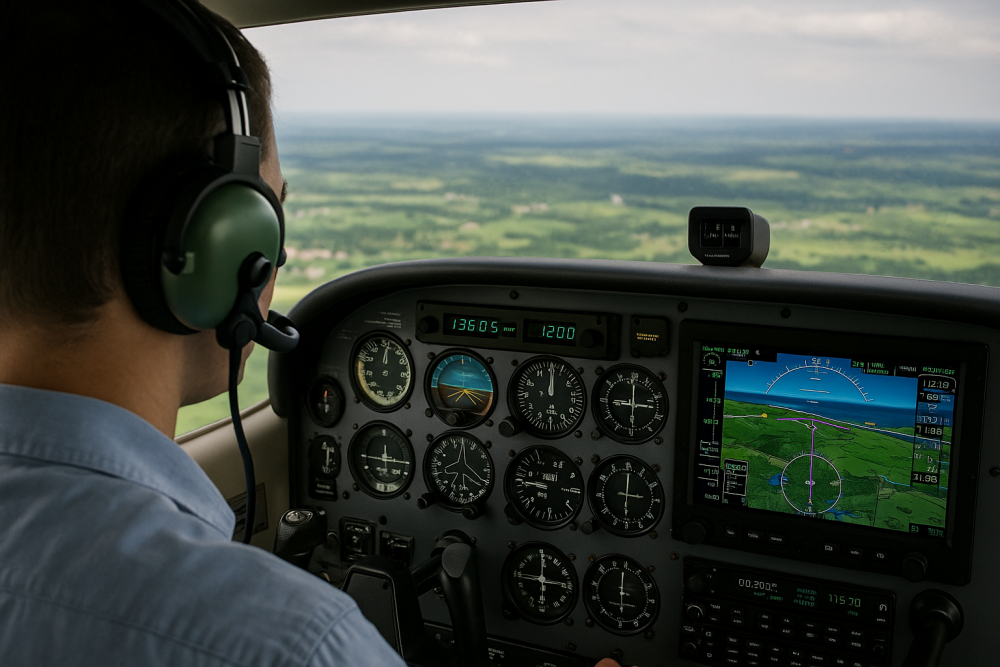
VOR, or VHF Omnidirectional Range, and NDB, or Non-Directional Beacon, are the bread and butter of traditional navigation. VOR relies on very high frequency radio signals to provide direction by comparing phases between two signals, giving a 360-degree range around the station. NDBs, on the flip side, broadcast a continuous signal in all directions and operate on a lower frequency. While they might feel a bit old-school, these tools still lay the groundwork for solid, reliable navigation — especially in non-GPS environments.
Both VOR and NDB systems have been pivotal in aviation, historically guiding pilots across continents before the digital age took over. Despite newer tech like GPS, these trusty systems remain essential, especially in remote areas where newer signal coverage might be spotty. Learn how real pilots still rely on traditional nav aids from the FAA’s Aeronautical Information Manual.
So, what really sets VOR and NDB apart? It mostly comes down to how precise and dependable each system is under different conditions. VORs are known for their accuracy, giving aircraft precise positioning and directional guidance via radials. NDBs, while reliable, are susceptible to interference from weather and terrain. They don’t provide directionality, and require the pilot’s interpretation using an ADF, or Automatic Direction Finder.
Each system has its strengths, contributing to an integrated navigational puzzle that pilots piece together with skill and experience. Understanding these systems isn’t just about learning old tricks — it’s about appreciating the evolution of airborne navigation and recognizing the tools at a pilot’s disposal.
Decoding Navigation: The Art of Interpreting Radials and Signals

Figuring out radials is one of those key skills that feels like a rite of passage for any pilot. A radial is simply a magnetic bearing from a VOR station. It’s like having a virtual spoke extending outward in all directions, and you’re trying to nail down your position relative to that spoke.
Now, when it comes to understanding those TO/FROM indicators, it’s all about context. These little flags on your navigation display tell you whether your aircraft is moving towards or away from a station, crucial for getting your heading right. Simply put, ‘TO’ means you’re headed towards the radial, and ‘FROM’ indicates you’re moving away. Sounds simple, right? But like most things in aviation, it takes a bit of hands-on practice to really click.
When you pass over a VOR or NDB, several things can happen. Most noticeably, you get a flip in your TO/FROM indicator, and depending on what you’re tracking, your needles might go wild for a hot second. These flips are natural and expected — a heads up that you need to update your navigation plan.
Getting these basics down is more than just a test of your patience. It’s about building confidence in how you interpret the signals and radials that these systems rely on. That confidence translates to solid navigation decisions and a smoother, safer flight operation every time you hit the skies. New to this? Try our Glossary of Flight Simulator Terms for quick definitions.
Mastering Techniques: Intercepting and Tracking Radials

Getting the hang of intercepting and tracking radials with a VOR might sound tricky, but it’s all about nailing down a solid routine. First up, you’ll turn to that OBS, or Omni Bearing Selector. This tool lets pilots set a desired radial to head towards or follow. The trick is learning how to dial in the right radial with the OBS knob — once you get the hang of it, the whole process starts to feel intuitive.
Once you’ve set your radial, the CDI, or Course Deviation Indicator, steps in. It tells you whether you’re drifting off course, and by how much. If the needle is pointing left, steer left to get back on track, and vice versa. The key is making gentle corrections rather than abrupt turns — keep things smooth and steady.
For NDB tracking, it’s all about reading the ADF needle, and making those slight heading changes to account for wind. Unlike VOR’s pinpoint accuracy, you have to anticipate and correct the drift, especially in strong wind conditions. Constantly monitoring your ADF needle and making small, calculated corrections helps you stay on course.
Real-world scenarios bring all this to life. Whether battling crosswinds or overflying terrain with limited visibility, mastering these techniques ensures safety and precision. It’s not just theoretical knowledge; it’s real-world application.
With practice, interpreting these instruments and signals becomes second nature. Soon enough, you’ll find yourself handling complex navigation with ease — and that confidence will carry over to every other part of your flying. Read our guide on Mastering Aerial Maneuvers for the next skill-building step.
Enhancing Experience: Navigating Simulated Terrains

For those looking to sharpen their skills without taking to the skies, flight simulators are a fantastic playground. Programs like Microsoft Flight Simulator, X-Plane, and Prepar3D offer a realistic environment where you can practice VOR and NDB navigation without worrying about fuel costs.
In these sims, you can experiment with various scenarios, like flying at night or battling tough weather conditions. This flexibility allows you to make mistakes in a safe setting, learn from them, and apply those lessons in real-world flying. Think of it as a virtual classroom where you set the course and challenges.
One of the main advantages of simulators is tackling signal limitations and challenges. Terrain interference and line-of-sight restrictions become less intimidating when you’ve tried different strategies to handle them in a simulator first. Experiment until you find what works best for you under different conditions.
Moreover, simulators enhance training realism. They’re great for running through procedures like station passage and signal interpretation repeatedly until you’re comfortable. It bridges the gap between traditional methods and modern technology, grounding your learning experience in practical applications.
Utilizing simulators is not just about learning the ropes — it’s about expanding your horizons. They boost your understanding and prepare you to tackle the aviation world more confidently, integrating both old-school methods and new technologies into your skill set.
The Future of Navigation Training: Keeping VOR and NDB Relevant

In the age of GPS and FMS systems, you might wonder why VOR and NDB are still in the mix. Even with all the high-tech advancements, these systems hold educational value that’s tough to beat. They train pilots to be sharp, adaptable, and understand the foundational aspects of navigation.
Traditional navigation skills taught through VOR and NDB are crucial for producing well-rounded pilots. Mastering these methods makes one more prepared for any scenario, especially in aviation areas where GPS coverage might falter. Plus, they build a strong sense of situational awareness.
Flights take off in a digital world, but a solid grasp of the basics remains invaluable. By learning the ropes with older navigation techniques, pilots gain a safety net that complements modern tools. It gives pilots a solid fallback plan if high-tech tools glitch out or go offline mid-flight.
Furthermore, these skills fit well into training programs focused on building comprehensive aviation knowledge. They foster problem-solving abilities and precision, which pave the way for better decision-making. It’s about equipping today’s pilots with a toolkit that includes both time-tested and cutting-edge navigation strategies.
So, while the navigation landscape continues to evolve, VOR and NDB remain integral to developing robust skills and confidence. Check out FAA’s Pilot’s Handbook of Aeronautical Knowledge (Chapter 16) for in-depth learning on radio navigation techniques. By blending traditional and modern techniques, pilots are better prepared to handle whatever challenges they might face above the clouds.
Wrapping Up: Old-School Tools, Modern Relevance
At the end of the day, mastering VOR and NDB navigation isn’t just about ticking a box on your training checklist — it’s about developing true situational awareness and resilience as a pilot. Whether you’re flying online in a sim or preparing for real-world IFR ops, these systems still have a lot to teach us.
If you’re just getting started or want to sharpen your skills further, try setting up a short VOR-to-VOR flight in your favorite simulator and track your progress using raw data only — no GPS cheat codes. It’s a great way to boost your confidence and see just how far traditional navigation can take you.
👉 Ready to level up your simulator skills? Check out Mastering Aerial Maneuvers in Flight Simulators or explore our Beginner’s Guide to Flight Simulation for more hands-on learning.
